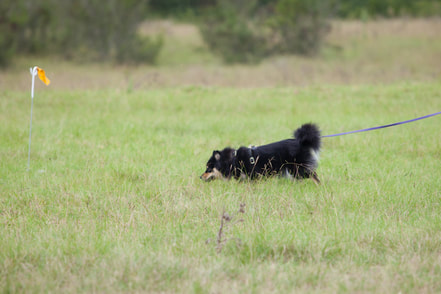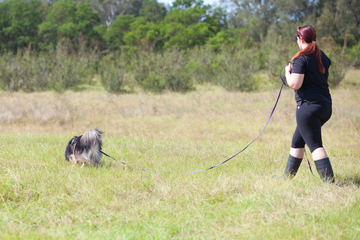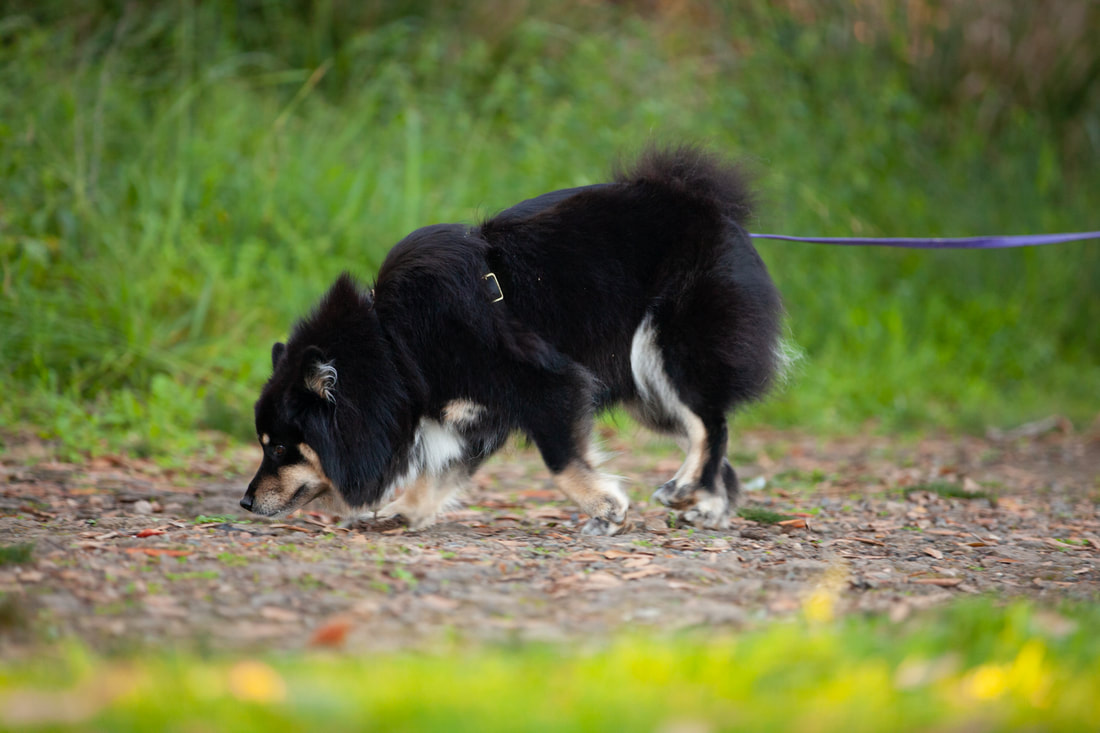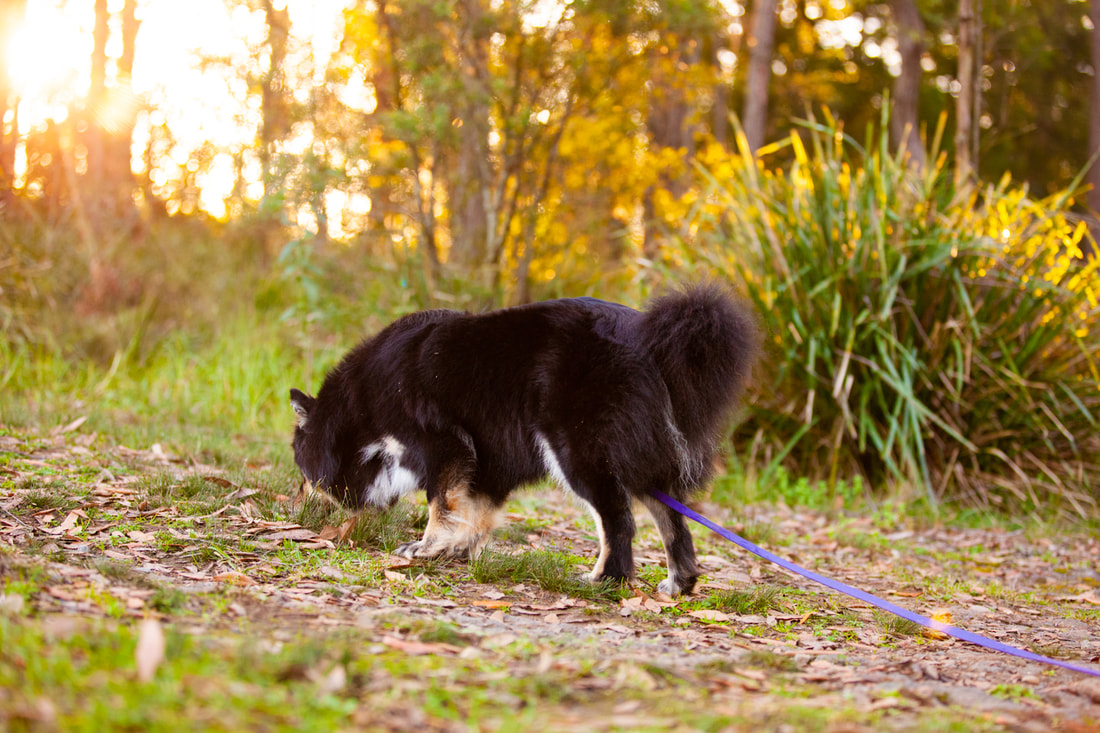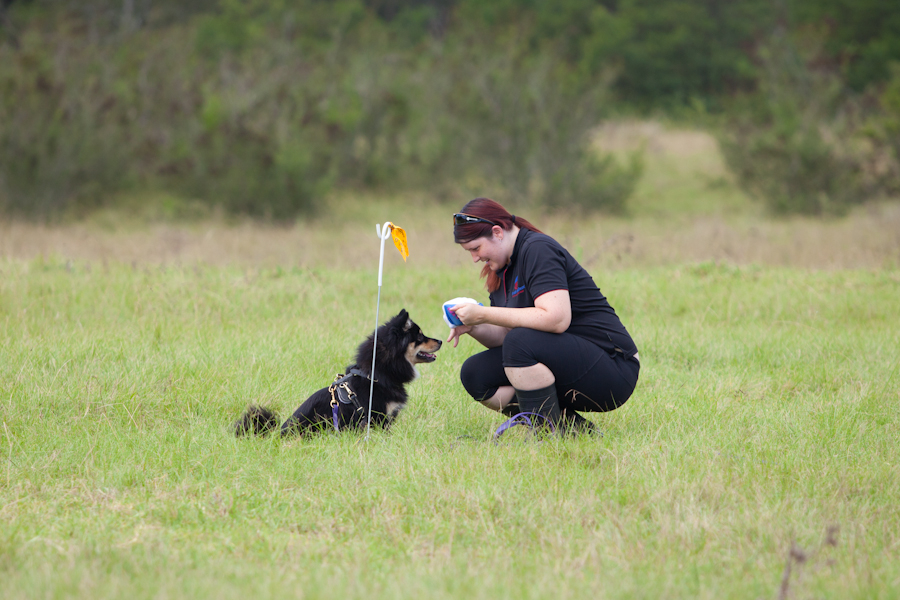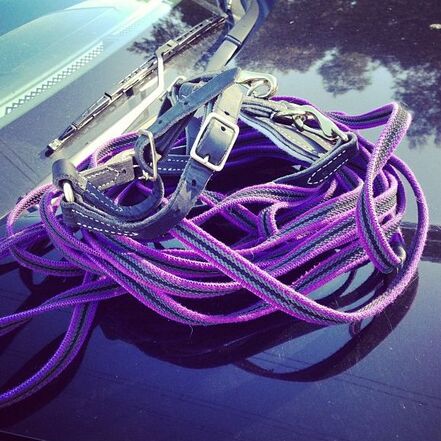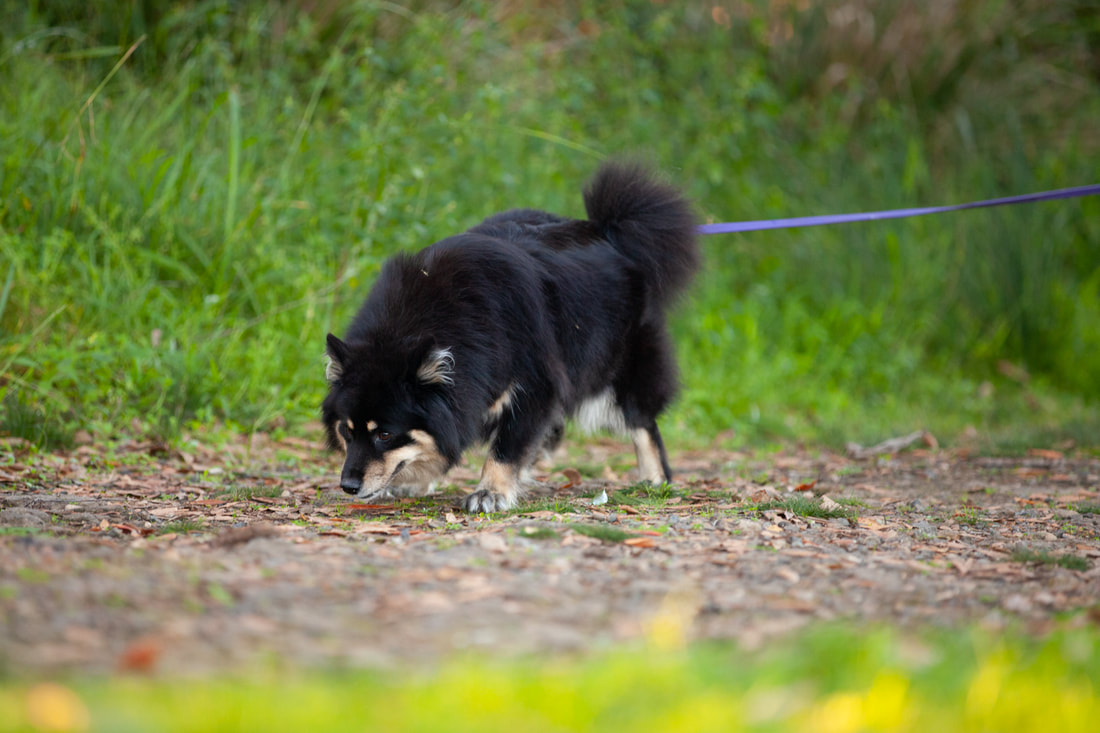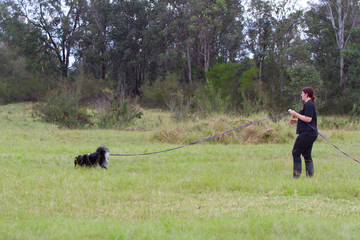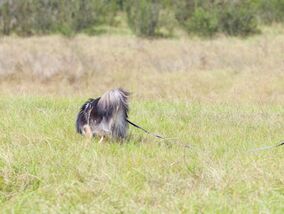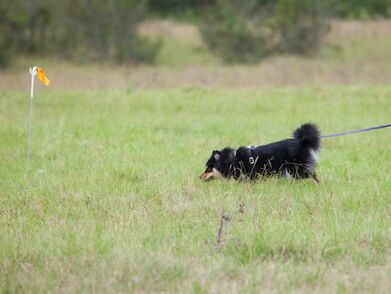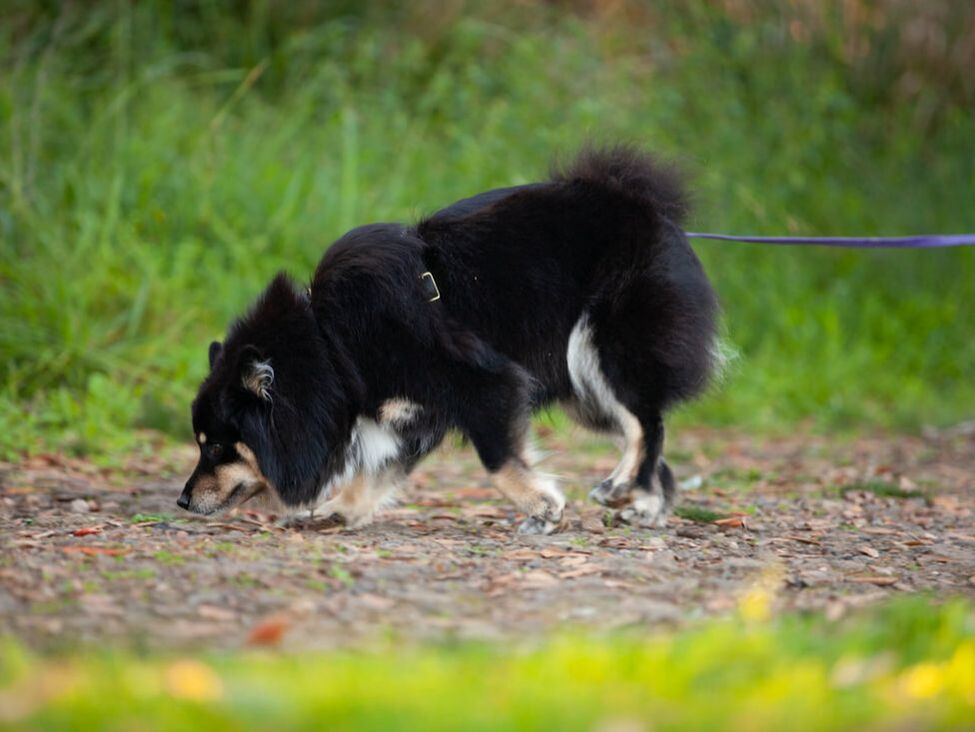What is tracking?Humans have been utilising dogs’ incredible sense of smell for different purposes for hundreds of years. From hunting game, to searching for missing people, drug and explosive detection and even for locating truffles, with the right training, dogs are much better detectors for many things than anything modern technology has produced. And it’s no wonder – with a sense of smell between a thousand and 10 million times better than ours depending on the dogs’ breed, scent is their most powerful and dependable sense.
ANKC tracking was developed to test this sense, attempting to mimic a situation where a person has gone missing and the dog has been engaged to find them. Track layers are given a map and directions to follow and articles (usually socks or other items of clothing) covered with their scent to drop along the track. At each of the articles, dogs should “position or otherwise indicate” to show the handler that they have found the article. As with most sports, different states have different interpretations of the rules so check with your local tracking club to see what is acceptable in your state. In NSW, indicating an article involves the dog having to hold a position (a sit, drop or stand) until the handler is able to retrieve the item from the ground. Once the handler is holding the item, they would instruct the dog to track again, and allow the dog to track out in front, up to the full extension of the tracking lead (10m). In other states, a nose touch over the article before continuing is accepted. |
Quick Facts
|
Training level required: ☆☆ (moderate)
Training type: obedience club/at home Equipment cost: $ (inexpensive) |
Overseeing body: Australian National Kennel Council
Minimum age for competition: 6 months Breed restrictions: None! Open to all breeds |
What equipment do I need?Tracking doesn't need a lot of equipment and inexpensive equipment can be purchased very easily from local stores, but it does require a large amount of open space for the dog to track on.
Handlers will need a tracking harness, a long line (10m is ideal), some flags to mark the start line and the track and a track layer (either known or unknown to the dog depending on the dog's level of training). The track layer will need several articles, such as unwashed socks that have been worn by the track layer to leave along the track for the dog to find. As with the vast majority of dog sports, the handler will also have to have a reward for the dog, which is generally a food reward for tracking. |
How much training is needed?The level of training required for tracking depends on the natural ability of the dog so some dogs will pick tracking up very quickly, whereas others may take longer to teach.
In ANKC tracking, dogs are learning to follow a ground scent (the track layer walking through what is often longer grass in a paddock) so most of the training involves handlers teaching a dog to follow the scent of the tracklayer and crushed grass, but there is also some work to be done to teach the dog to position on articles, and return to scenting once they have found an article. If handlers have done extensive obedience work, it can also be harder for the dog to start in tracking, as they have always been taught to look to the handler for direction but are the one now being followed. |
Titles
There are only three titles available in tracking. TD is earned when the dog has successfully completed tracks 1,2 and 3, TDX is earned when the dog has completed tracks 4, 5 and 6 and TDCh (which goes before the dog's registered name) is awarded to dogs that have completed tracks 7 and 8.
|
|
The first level of competition
Track 1Track 1 involves the dog tracking someone they know for approximately 400 metres. The track will change direction 2 times, and the angle of these corners has to be somewhere between 90-150 degrees. The first change of direction is always more than 100 metres from the start line.
There will be one article dropped on the track by the track layer, however the dog does not need to indicate the article to gain a pass. The track is laid between 20 and 45 minutes before the dog starts so there is plenty of fresh scent for the dog to find. The track layer themselves or an article placed by the track layer is always placed at the end for the dog to find. |
|
NSW Breeder Identification Number: B000685661 | Victoria Source Number: EE102260
Dogs NSW Member Number: 2100088743 |
© Pawformance 2023
|

